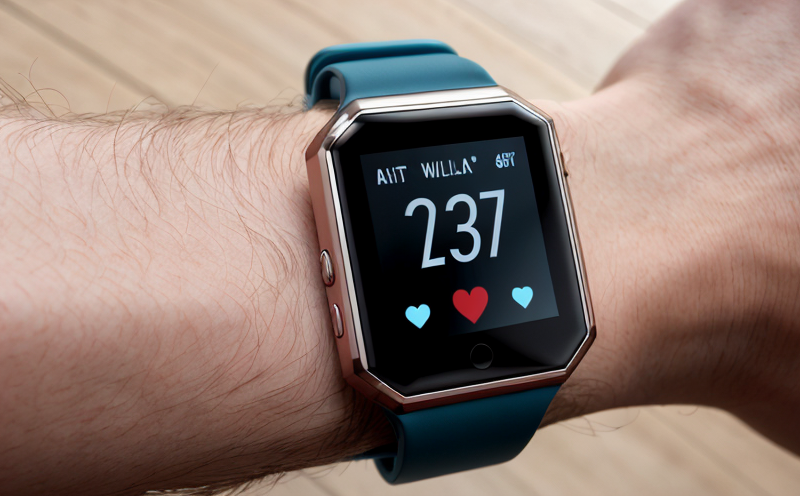IEC 60601-1-6 Usability Engineering Testing for Wearables
The International Electrotechnical Commission’s (IEC) Medical Electrical Equipment – Part 1: General Requirements for Safety and Essential Performance – Section 6: Usability Engineering standard, IEC 60601-1-6, is a critical document that addresses the importance of usability in medical devices. This standard ensures that the design, operation, and interaction with wearable and digital health devices are safe, effective, and user-friendly. Compliance with this standard is essential for ensuring patient safety and satisfaction.
The standard focuses on several key areas including:
- Usability engineering principles
- User-centered design processes
- Ergonomic requirements during use
- Interaction with healthcare professionals and patients
- User training and support documentation
- Data accuracy, consistency, and reliability in the context of usability
The testing process under IEC 60601-1-6 involves a comprehensive evaluation of various aspects of usability. This includes assessing:
- Usability engineering principles applied during design phases
- User interfaces, including displays and input devices
- Ergonomics of the device in terms of size, shape, weight, and other physical attributes that affect user interaction
- Accessibility considerations for users with disabilities
- The ease of use and error prevention during operation
The process also involves evaluating:
- User training materials and support documentation
- Data accuracy and consistency in relation to usability
- Ergonomic factors that can impact user interaction during prolonged use
Compliance with IEC 60601-1-6 is critical for medical device manufacturers as it ensures that the devices are not only safe but also user-friendly. This standard helps in reducing the risk of errors, improving patient outcomes, and enhancing overall satisfaction.
In practice, this testing involves a multi-step process:
- Conducting usability engineering reviews during design phases
- Developing prototypes for user testing
- Evaluating feedback from users to refine designs
- Finalizing the device with documented improvements
- Conducting post-market surveillance and continuous improvement based on ongoing feedback
The standard also emphasizes the importance of involving end-users in the design process. This ensures that the final product is not only technologically advanced but also meets the needs and expectations of its intended users.
This testing approach aligns with broader trends towards personalized healthcare solutions, where technology plays a crucial role in improving patient care. By focusing on usability engineering, IEC 60601-1-6 helps ensure that wearable devices are both safe and effective, contributing to better health outcomes for patients.
Why It Matters
The importance of usability in medical wearables cannot be overstated. Usability is a critical factor in determining the safety and effectiveness of these devices. Poorly designed wearable devices can lead to user errors, which may result in adverse events or even life-threatening situations. Ensuring that these devices are easy to use and understand reduces the risk of such incidents.
Usability also plays a significant role in patient satisfaction and adherence to treatment regimens. A device that is difficult to operate may discourage users from using it consistently, leading to suboptimal outcomes. Conversely, a device that is intuitive and user-friendly promotes regular use, which can lead to better health outcomes.
Moreover, compliance with IEC 60601-1-6 demonstrates a commitment to patient safety and satisfaction. Regulatory bodies like the FDA and other national standards agencies often require manufacturers to comply with this standard as part of their regulatory submissions. Ensuring compliance helps manufacturers navigate these regulatory requirements more effectively.
In addition, there is an increasing trend towards personalized healthcare solutions, where wearable devices play a key role in providing real-time data on patient health status. The ability to accurately interpret and act upon this data requires that the device be user-friendly. This standard ensures that the data provided by these devices are reliable and consistent.
Finally, compliance with IEC 60601-1-6 can also provide a competitive advantage in the market. Consumers increasingly value products that are safe and easy to use. Demonstrating adherence to this standard can help manufacturers stand out in a crowded marketplace.
Why Choose This Test
The IEC 60601-1-6 Usability Engineering Testing for Wearables is a vital service that ensures the safety and effectiveness of medical devices. Here are some reasons why choosing this test is essential:
- It helps identify potential usability issues early in the design phase, preventing costly redesigns later.
- It ensures compliance with international standards, which can facilitate market access.
- It enhances patient safety by reducing the risk of errors and adverse events.
- It promotes user satisfaction and adherence to treatment regimens.
- It demonstrates a commitment to quality and regulatory requirements.
- It provides a competitive edge in the marketplace by showcasing expertise and compliance with international standards.
The testing process is rigorous, involving multiple stages of review and evaluation. This ensures that any potential issues are identified and addressed before the device reaches the market. The result is a safer, more effective, and user-friendly product.
Choosing this test also means working with experienced professionals who understand the complexities of medical device design and regulation. They can provide valuable insights and guidance throughout the testing process, ensuring that the final product meets all necessary standards.
Environmental and Sustainability Contributions
The IEC 60601-1-6 Usability Engineering Testing for Wearables has several environmental and sustainability benefits:
- Eco-friendly design: By focusing on ergonomics and user-friendly interfaces, the testing process can lead to more efficient devices that require less energy and resources during use.
- Reduced waste: Usable devices are more likely to be used correctly, reducing the need for replacement or disposal due to errors.
- Promotes recycling: By ensuring that devices are easy to use and understand, their lifecycle can extend, encouraging proper disposal and recycling practices.
- Educational impact: The testing process also involves evaluating user training materials. Ensuring these materials are effective promotes better health outcomes and reduces the environmental burden associated with suboptimal healthcare practices.
The standard’s focus on usability engineering principles also contributes to a more sustainable healthcare system by promoting efficient use of resources and reducing waste.





